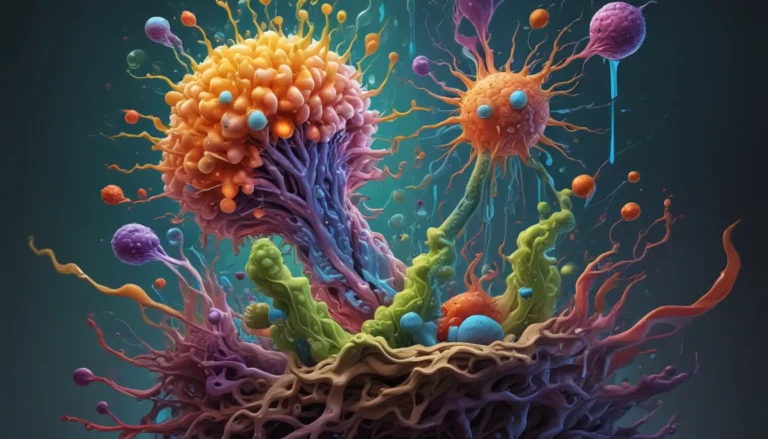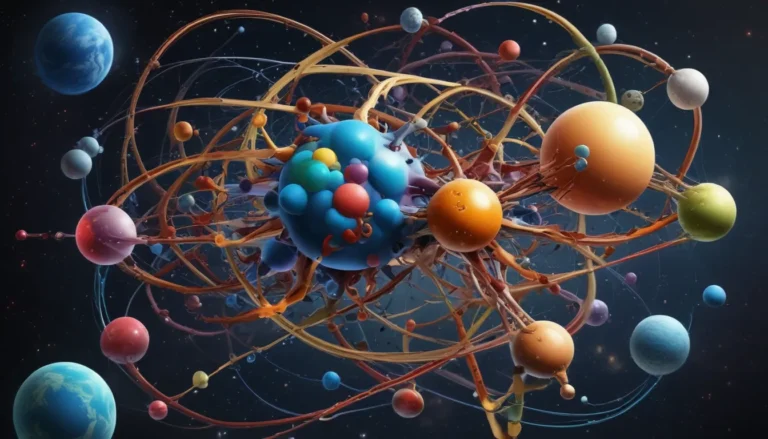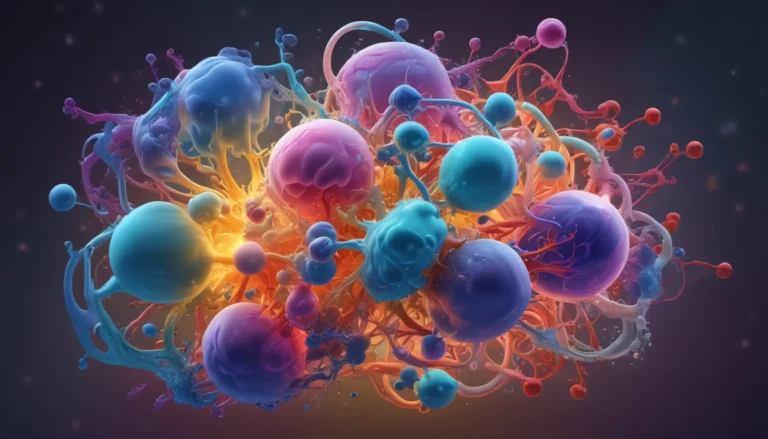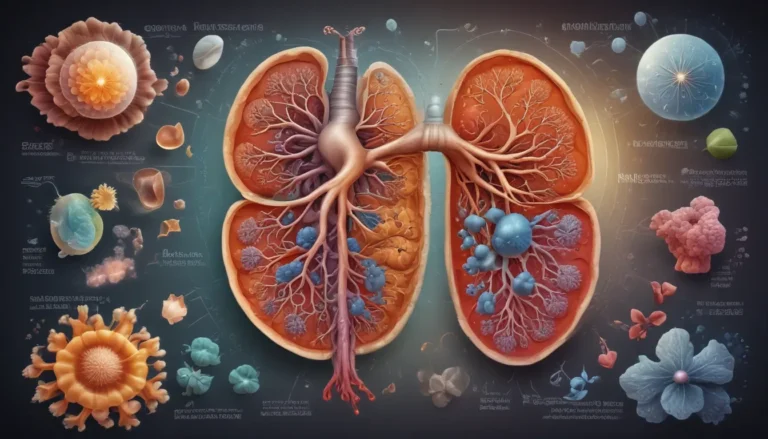A Note About Images: The images used in our articles are for illustration purposes only and may not exactly match the content. They are meant to engage readers, but the text should be relied upon for accurate information.
Vapor pressure is a fundamental concept in chemistry that impacts various aspects of our lives, from cooking and brewing beverages to scientific research and engineering. Understanding vapor pressure and its behavior provides valuable insights into the properties and behavior of substances in both gas and liquid phases. In this article, we will delve into the captivating world of vapor pressure and explore 18 unbelievable facts that shed light on this intriguing phenomenon.
Unveiling Vapor Pressure: A Closer Look
Vapor pressure is the measure of a substance’s tendency to vaporize, representing the pressure exerted by the gaseous phase when it reaches equilibrium with its liquid or solid phase at a specific temperature. It signifies the escape of molecules from the surface of a liquid or solid into the gas phase, showcasing the dynamic nature of molecular interactions.
The Influence of Temperature on Vapor Pressure
One of the key determinants of vapor pressure is temperature. As the temperature of a substance rises, the kinetic energy of its molecules increases, leading to a higher number of molecules with sufficient energy to overcome attractive forces and transition into the gas phase. This relationship between temperature and vapor pressure highlights the dynamic nature of molecular behavior at different energy levels.
Intermolecular Forces and Vapor Pressure
The strength of intermolecular forces, such as hydrogen bonding or van der Waals forces, significantly influences the vapor pressure of a substance. Stronger intermolecular forces result in lower vapor pressure, as more energy is required to break these forces and facilitate the conversion of the substance into the gas phase. Understanding these interactions provides valuable insights into the varying behaviors of different substances based on their molecular structure.
Exploring Boiling Points and Vapor Pressure
The boiling point of a liquid occurs when its vapor pressure equals the atmospheric pressure, facilitating the transition from the liquid to the gas phase throughout the substance. This fundamental connection highlights the interplay between vapor pressure and external pressure conditions, underscoring the importance of equilibrium in phase transitions.
Factors Affecting Evaporation Rates
Substances with higher vapor pressures tend to evaporate more quickly, as they allow a greater number of molecules to escape into the gas phase. This phenomenon is particularly evident in volatile substances like gasoline or ethanol, where rapid evaporation rates contribute to their practical applications in various industries.
The Role of Surface Area in Vapor Pressure
The surface area of a liquid plays a crucial role in determining vapor pressure, as a larger surface area provides more space for molecules to escape into the gas phase. This relationship underscores the significance of container design in facilitating evaporation and controlling vapor pressure in practical applications like perfume storage.
Implications for Evaporation Processes
As vapor pressure increases, the rate of evaporation also rises, reflecting the heightened presence of molecules with sufficient energy to transition into the gas phase. This relationship between vapor pressure and evaporation highlights the dynamic nature of molecular interactions and their impact on phase transitions.
Unique Characteristics of Different Substances
Each substance possesses distinct vapor pressure properties based on its molecular weight, intermolecular forces, and temperature, resulting in varying behaviors even at similar conditions. This diversity underscores the complexity of molecular interactions and the nuanced effects of different factors on vapor pressure.
Purity Assessment Using Vapor Pressure
Vapor pressure can serve as a valuable tool for determining the purity of a substance, as deviations from expected vapor pressure values can indicate the presence of impurities. This application highlights the sensitivity of vapor pressure measurements in assessing the quality and composition of chemical substances.
Environmental Monitoring with Vapor Pressure
The measurement of vapor pressure in the atmosphere enables scientists to evaluate air quality and identify potential pollutants, particularly volatile organic compounds (VOCs). This application underscores the versatility of vapor pressure in environmental monitoring and its pivotal role in ensuring air quality and public health.
Practical Applications in Industry
Vapor pressure plays a critical role in various industrial processes, from distillation and fractional distillation to the production of beverages and alcoholic drinks. By leveraging the principles of vapor pressure, engineers and researchers can design efficient systems and optimize production processes in diverse fields.
Safety Considerations with Volatile Chemicals
Understanding the vapor pressure of volatile chemicals is essential for ensuring safe handling and storage practices, as substances with high vapor pressures may pose flammability or toxicity risks. This knowledge empowers professionals to implement appropriate safety measures and mitigate potential hazards in chemical operations.
Impact of Solutes on Vapor Pressure
The addition of solutes to a solvent can alter its vapor pressure, leading to practical implications in industrial processes like freeze-drying. By adjusting the vapor pressure through solute incorporation, researchers can achieve precise control over phase transitions and optimize material processing methods.
Unveiling Substance Volatility
Vapor pressure serves as a key determinant of substance volatility, indicating the readiness of a substance to vaporize under specific conditions. High vapor pressure signifies high volatility, while low vapor pressure suggests lower volatility, showcasing the diverse range of behaviors exhibited by different substances.
Vapor Pressure in Earth’s Atmosphere
Water vapor, with its specific vapor pressure properties, plays a crucial role in shaping Earth’s atmosphere and influencing weather patterns, precipitation, and the water cycle. This connection between vapor pressure and atmospheric dynamics underscores the profound impact of molecular interactions on environmental processes.
Diverse Applications Across Scientific Disciplines
The significance of vapor pressure extends across various fields, including chemistry, physics, and engineering, where a deep understanding of this concept is vital for designing processes, optimizing performance, and advancing technological innovations. By embracing the complexities of vapor pressure, researchers and practitioners can unlock new possibilities and drive scientific progress.
Conclusion: Embracing the Wonders of Vapor Pressure
In conclusion, vapor pressure represents a captivating domain of study that bridges the gap between molecular interactions and macroscopic phenomena. By exploring the myriad facets of vapor pressure, from its underlying principles to practical applications, we gain a deeper appreciation for the intricate relationships that govern substance behavior.
Whether you are a curious enthusiast or a seasoned professional, the exploration of vapor pressure offers a gateway to a world of discovery and innovation. By embracing the fundamental principles of vapor pressure, we embark on a journey of scientific exploration and practical insight that enriches our understanding of the natural world.
FAQs: Navigating Common Questions on Vapor Pressure
Q: What is vapor pressure?
A: Vapor pressure is the pressure exerted by a vapor in equilibrium with its condensed phases at a specific temperature.
Q: How does temperature affect vapor pressure?
A: Temperature influences vapor pressure by increasing molecular kinetic energy, leading to higher evaporation rates and greater pressure.
Q: What role do intermolecular forces play in vapor pressure?
A: Interactions between molecules, such as hydrogen bonding, impact vapor pressure by influencing the energy required for phase transitions.
Q: What practical applications does vapor pressure have?
A: Vapor pressure finds applications in distillation, environmental monitoring, industrial processes, and safety considerations with volatile substances.
Q: How is vapor pressure measured in practice?
A: Techniques like the manometer, vapor pressure osmometer, and Knudsen effusion method are commonly used to measure vapor pressure accurately.
Q: Why is understanding vapor pressure important in scientific research?
A: Vapor pressure underpins various scientific disciplines, providing insights into substance behavior, phase transitions, and environmental processes.
Embracing the complexities of vapor pressure opens doors to a world of scientific inquiry and practical applications, enriching our understanding of the intricate relationships that govern the behavior of substances. As we navigate the remarkable world of vapor pressure, we uncover a realm of possibilities and discoveries that inspire curiosity and drive innovation. Join us on this enlightening journey into the captivating realm of vapor pressure, where every fact unveils a new facet of this extraordinary phenomenon.






